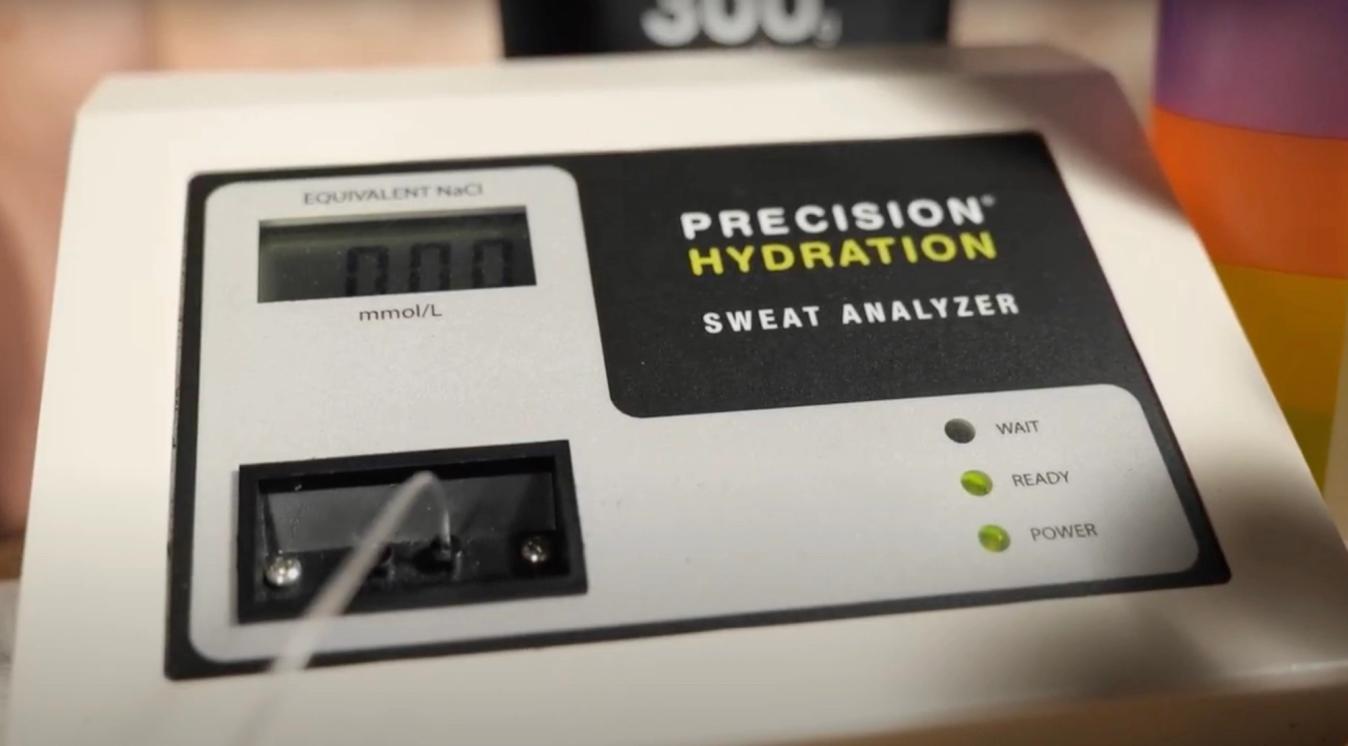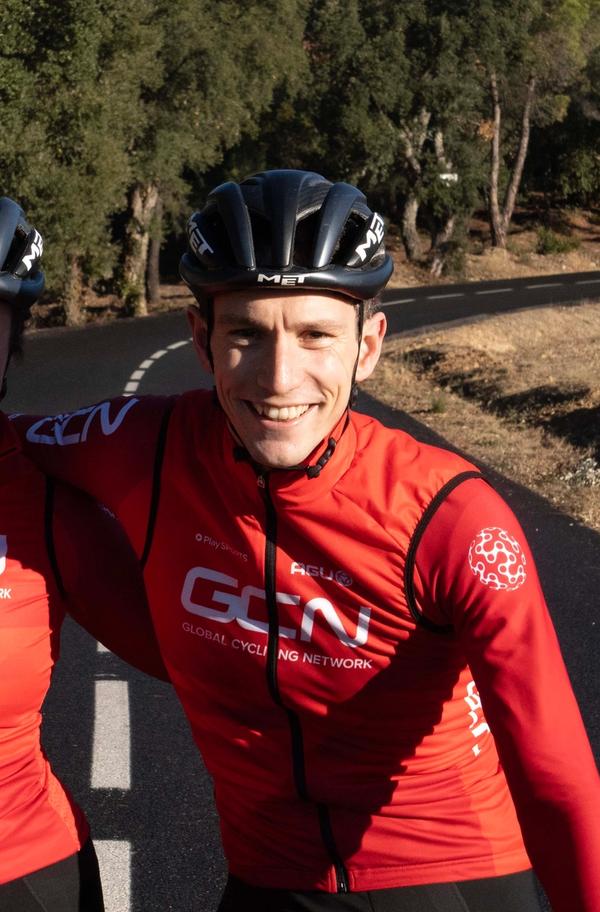Hydration in cycling: Who's the sweatiest GCN presenter?
Precision Fuel & Hydration join Conor to help explain about the importance of tailored hydration
Alex Hunt
Junior Tech Writer
Here at GCN, we aren’t shy of a challenge, sometimes to our detriment. Last year both Alex Paton and Conor Dunne found themselves suffering due to hydration. When Alex and Ollie attempted to ride the 312km lap of Mallorca Alex lost 6kg of body weight due to sweat. In the process, he covered his jersey in salt, which got us thinking: how does the way we sweat vary from person to person and what is the best strategy for keeping on top of hydration?
We spoke to Precision Fuel & Hydration who agreed to test our GCN presenters to find out the composition of their sweat and what products and strategies would best facilitate hydration.
- Read more: How does heat affect cycling performance?

© GCN
Alex was left feeling worse for wear after his ride around Mallorca left him 6kg lighter than when he started it
How is your sweat tested?
Fortunately for everyone, including us, getting the composition of your sweat tested doesn’t require flat-out, full gas efforts. In fact there is no need for any exercise at all. Instead, with this method a small device uses two electrodes to stimulate the sweat glands of the forearm allowing for sweat to be collected and analysed.
This will provide a sweat composition unique to the rider that can then be used to better fuel and hydrate to prevent cramps and dehydration-related fatigue.
How can knowing your sweat composition help with hydration?
The key to effective hydration is to replace what your body has lost through sweating. That doesn't just mean replacing the lost water. Sweat is a blend of salts, minerals and electrolytes that are important for homeostasis.
- Read more: Mastering nutrition and recovery: what should you eat while following an indoor cycling plan?
Everyone’s sweat is different with some riders losing more of these salts, minerals and electrolytes than others. It makes sense then, for riders to tailor their hydration to match what their body needs. Hydration is a delicate balance, and matching your needs to the fuel you use is the best and most effective way to rehydrate.

© GCN
Specific products are available that can be tailored to your needs based on what you lose through sweat
Why is sodium content so important to performance?
There is a plethora of electrolytes that are lost in sweat however the test that Precision Fuel & Hydration uses only focuses on sodium. This is because the sodium found in sweat is drawn directly from an athlete's blood plasma volume.
What this can mean is that throughout an endurance ride, the volume of blood available to a rider steadily decreases if the sodium is not replenished. This is why dehydration can so quickly become a performance inhibitor as the cardiovascular system has to work harder to push the same level of oxygen-rich blood to the muscles that need it.
Should athletes follow the same low sodium guidelines issued to the public?
In wider populations, sodium has been linked to health conditions such as high blood pressure and a high-sodium diet is a risk factor for developing higher blood pressure. As a general rule for the public, we are all advised to consume low amounts of sodium.
As athletes, this does change a little. If you are a naturally salty sweater and you are exercising most days at intensities that have you sweating, it can be beneficial to up your sodium intake. This is because it will not remain in your system at a potentially high level for a prolonged period and will be lost through sweat in the next workout.

© GCN
For athletes it can actually be detrimental to performance to abide by general health recommendations on sodium intake
The take-home here is that although there are recommended levels, high sodium content is a relative term. If you are about to embark on a long multi-hour ride, especially in warmer conditions you would actually be encouraged to consume higher levels of sodium before and during the activity to combat the amount lost through sweat.
What is the best way to hydrate effectively knowing your sweat composition?
The first and most important thing is the awareness that athletes have after being tested. Once you have the knowledge of how much salt is lost in your sweat you can fuel accordingly with saltier riders able to compensate by consuming higher sodium fuels during exercise.
Combining the correct volume of fluid intake with the correct amount of electrolytes is the best way to retain optimal performance throughout an activity.
The science around sweating isn’t exact and can be open to variance based on conditions and levels of exertion. This is why it is recommended that for intense events that are going to put higher than typical stress on your body, you should consume an even higher sodium level than a test might suggest you need.
What would the ideal athlete look like?
Precision Fuel & Hydration tell us that if they were designing the perfect athlete from the ground they would have a fairly high sweat rate as it is advantageous for temperature regulation, especially in warmer climates. But ideally, that sweat would have a low sodium content. This would make hydration strategies easy as there is less risk of electrolyte imbalances due to sweat loss and poor rehydration.
That said, it is not a deal breaker if you find yourself outside of this ideal criteria. It simply comes back to having the awareness of what your body needs to perform optimally.
Can I get a sweat test myself?
If you head over to the Precision Fuel & Hydration website you can find and book a sweat test near to you. Once you have your results from the sweat test you can then use the free calculator tool on the website to work out what your specific needs are to optimise your hydration.

© GCN
It is possible to get a sweat test yourself which can be booked through the Precision Fuel & Hydration website
This tool will give you a rough guide not only for the electrolytes you need to consume but also the amount of fluid needed per hour as well as how many grams of carbohydrates. Combining all of this information will provide you with a rounded nutritional approach to training based on the specific needs of your body.
To find out how each of the presenters faired when they were tested, make sure to watch the video linked at the top of this page. For more tech features head over to the tech feature section of the website.


.jpg?rect=957,780,3097,3060&w=600&auto=format)











.jpg?w=600&auto=format)


